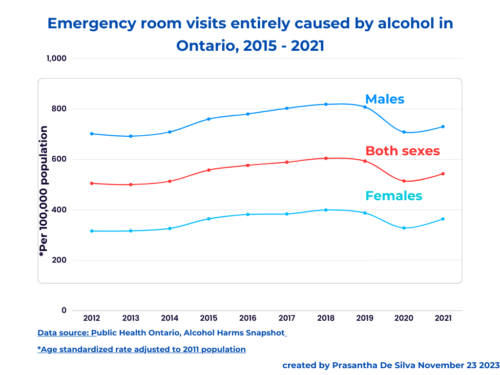Author: Prasantha De Silva
Promote health equity
Look at Figure 1 Figure 1: Image source: http://www.sollis.co.uk/wp-content/uploads/2016/10/equity-vs-equality.jpg In Figure 1, all three children are of equal height. But, they cannot reach the fruits, Because of, the terrain’s unequalness. They need help. But, the help each one requires is different. They need boxes of different heights. By helping them with boxes of “appropriate height”, all three can reach the fruits. This is equity: Providing help appropriate to the degree of help needed. As we can see the degree of help needed varies not due to inherent biological differences. It is due to reasons outside their control. When we find…
Use plain language to craft public health messages
Welcome to the world of effective communication for promoting public health and safety! In this blog post, we will explore the power of using plain language for crafting public health messages. By using simple and clear language in your messaging, we can ensure that, Whether you’re a public health professional or an individual looking to make a positive impact in your community, let’s explore how to create compelling public health messages that inspire action! Learn how to use plain language to craft effective public health messages with our helpful tips and strategies. This post also gives you a series of…
Lessons from Montreal Protocol to Upstream Public Health Community
This post contains Amazon affiliate links. We may earn a commission from qualifying purchases through these links at no extra cost to you. The Montreal Protocol (#MontrealProtocol) is an upstream intervention #ClimateAction classic. It is a powerful climate treaty. It directly impacted global public health. The Protocol’s 35-year-long legendary journey carries many lessons for the public health community who sail upstream. We can adapt and adopt many of its elements. This post attempts to surface out the key elements of this Montreal Protocol success story. Let us dive into its upstream journey. Background My journey begins with the Montreal Protocol’s…
Social norms theory to craft messages to reduce high-risk drinking
In 1989, Northern Illinois University wanted to reduce students’ high-risk (binge) drinking behaviour. Its researchers adopted the social norms theory to craft messages for their social marketing campaign. This is their story. This post refers to Michael Haines’s research paper published in 1996. and the Social Norms National Research and Resources website. Step 1: They began with a situational analysis. They surveyed students for their perceptions and drinking behaviour when partying in 1988. Of all students, 69.7 per cent of students perceived that they binge drink (more than five drinks) when partying, But, in reality, only 43 per cent of…
How I created an asset map with Google My Maps
Updated on September 20, 2024 I created the following asset map using the Google My Maps tool, which is free. My project was to create a map of the designated stroke centres in Ontario. These centres can remove a brain blood clot that results in a stroke. Strokes are medical emergencies. If a patient suspected of a stroke reaches those centres in time, surgeons can prevent/minimise permanent brain damage. Here are the steps I followed. Step 1: Data collection I created an Excel sheet of the designated stroke centres. I obtained the hospital names from this publicly available source: Cor…
Community asset mapping
Asset mapping strategy benefits health promoters, resource and patient care navigators. It helps us, Of course, it also helps us to identify gaps. Overall, the strategy helps us visualize a more realistic picture of our community. Asset mapping should be an integral part of social determinants of health projects. What do we mean by community assets? According to the UCLA Center for Health Policy Research, community assets include “anything that improves the quality of community life”. Community assets are “anything that improves the quality of community life”. UCLA Center for Health Policy Research We can group community assets in many…
How to deal with COVID19 vaccine hesitancy
COVID 19 vaccine hesitancy is real. It hurts. With Omicron, vaccine hesitancy has become a major roadblock. The problem has gone viral very much like the COVID19 spread. What is COVID 19 vaccine hesitancy? Vaccine hesitancy refers to situations when someone either refuses or delay getting the CVODI19 vaccines. Vaccine hesitancy is not new; it has been there for all vaccines. However, we are discussing this again with this COVID19 pandemic. We have many resources to learn more about it. The latest addition is the Coursera course. It is free. This post dives into this excellent resource. About the course…
The third dose may prevent your hospital admission
A group of Isreal researchers have documented hospital admissions due to COVID-19. They have compared the patients’ vaccine status and found that majority did not have the third dose. Following is the graph from their research paper published on The Lancet, October 29, 2021. Following is the link to the full paper: https://www.thelancet.com/journals/lancet/article/PIIS0140-6736(21)02249-2/fulltext Go for the third dose.
COVID-19 can be airborne – Reframe your messages
Evidence is growing that COVID-19 can transmit through air. Need evidence? Julian W Tang et al.’s BMJ article dissects the evidence. Furthermore, governments are changing their health education messages accordingly. In this video clip, the Canadian government are now promoting adequate ventilation as a method of reducing transmission. https://www.youtube.com/watch?v=ZZjTT4nrWu4&t=24s
Health inequalities and upstream public health
The upstream-downstream metaphor helps public health practitioners to choose cost-effective public health interventions. This post curates a set of peer-reviewed articles that deal with the upstream-downstream” metaphor. 1. The upstream versus downstream metaphor to reduce health inequalities In this article, Naoimh, E. McMahon reviews published literature until June 2020 to find how the upstream-downstream metaphor has helped us frame action to reduce health inequalities. The full text is available for free. Link to the article: https://academic.oup.com/jpubhealth/advance-article/doi/10.1093/pubmed/fdab157/6288548 In her previous article published in the Critical Public Health Journal, she describes how English researchers interpret the “upstream-downstream” parable. In Naoimh’s two blog…

























